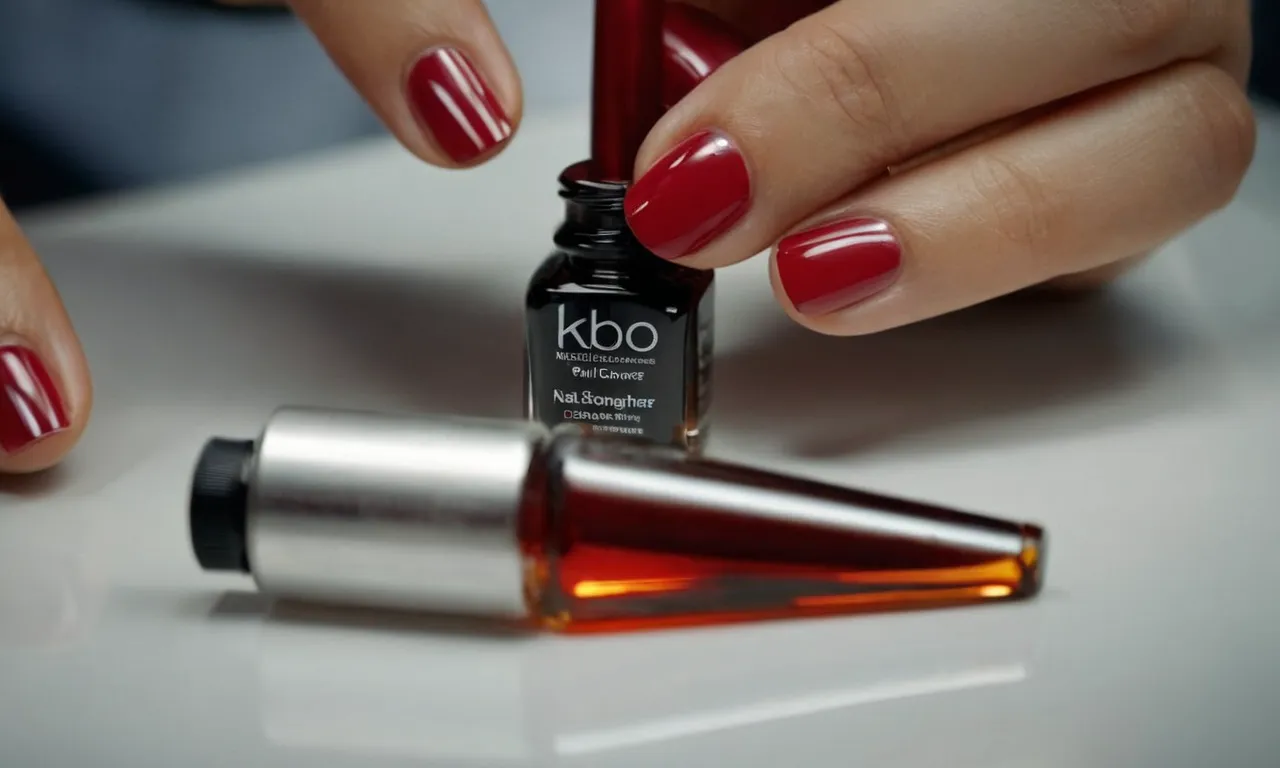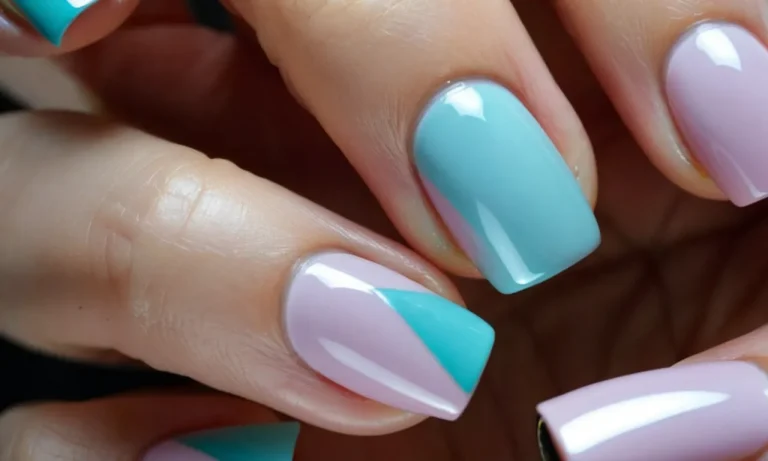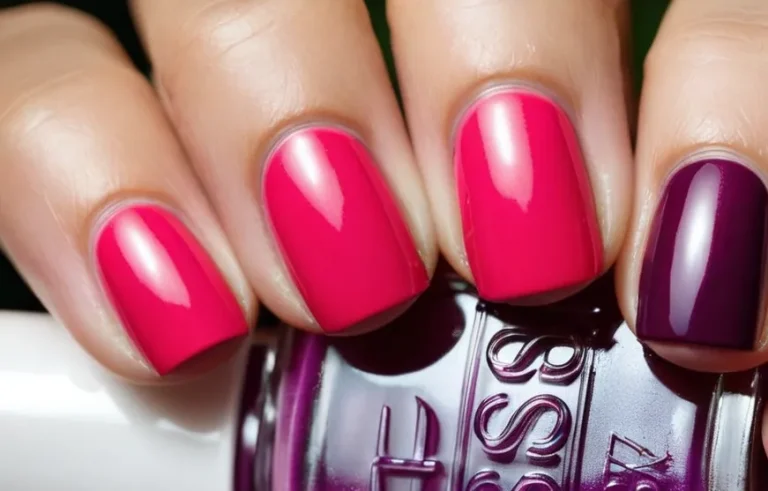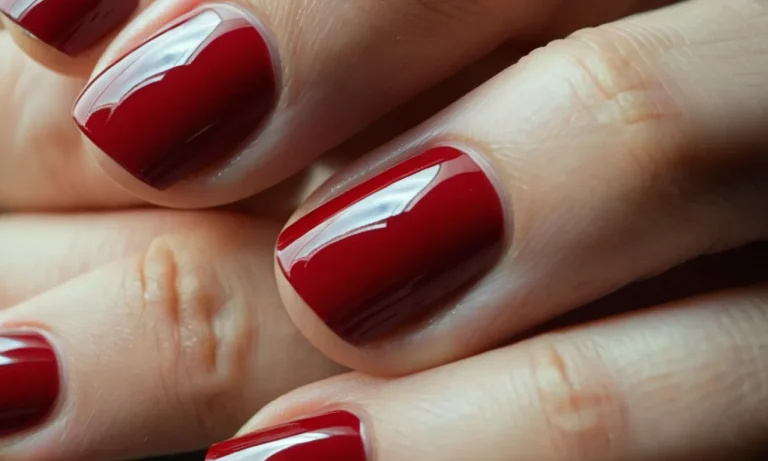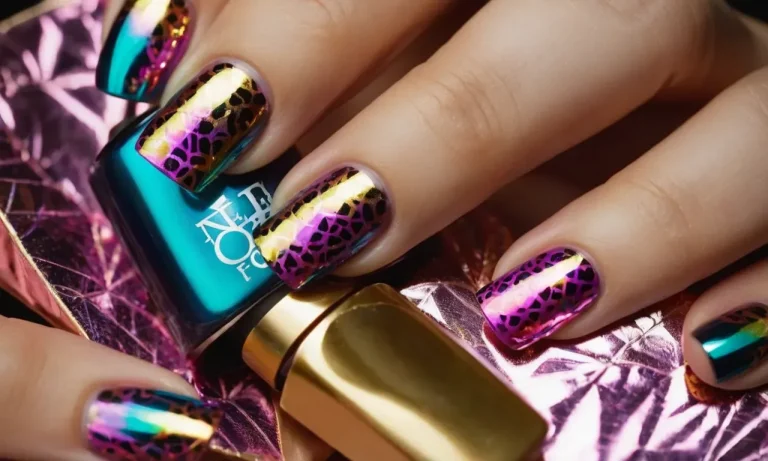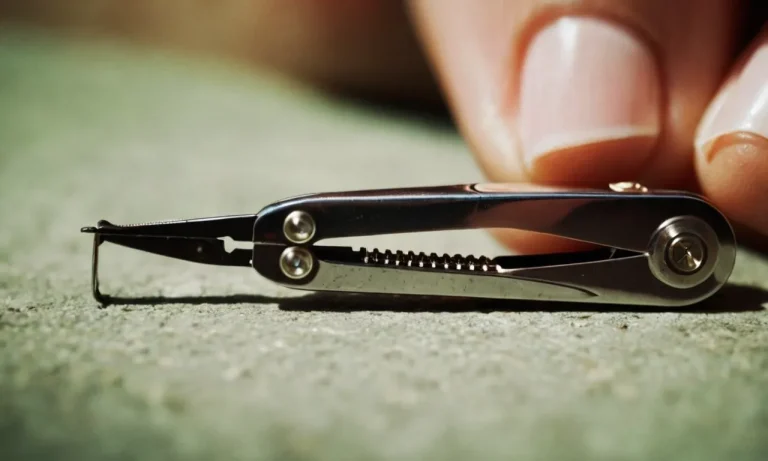How Do Nail Strengtheners Work? A Detailed Look At The Science Behind Stronger Nails
Having beautiful, healthy nails is something many people strive for. But between everyday wear and tear, nail polish, gels, acrylics, and more, nails can become damaged and brittle over time. If your nails are peeling, splitting, or just not as strong as you’d like, using a nail strengthener may help.
But how exactly do these products work to repair nails and make them stronger? Read on as we explore the science behind nail strengthening formulas.
If you’re short on time, here’s a quick answer: Nail strengtheners work by providing keratin, calcium, and other nourishing ingredients to repair damage and create harder, stronger nails. Most contain active ingredients like calcium, vitamins, proteins, and polymers that bind to the nail plate to fill gaps and cracks, preventing peeling and breakage.
Understanding the Structure and Composition of Nails
Nails are made of keratin proteins
Nails are composed primarily of a protein called keratin, the same protein that makes up hair and the outer layer of skin. Keratin is a structural protein that is important for providing strength and flexibility. In nails, keratin fibres are compacted and hardened to form the tough exterior surface.
There are three main types of keratins found in the human nail: K31, K34, and K85. The cortex of the nail, which makes up the bulk of its thickness, is composed mainly of K31 and K34 chains. The nail bed contains mainly K85 keratins.
The specific composition and structure of these keratin proteins gives strength and resilience to the nail.
Nails contain layers with different properties
While nails may appear to be homogenous, they actually contain several distinct layers with different properties.
The main layers from top to bottom are:
- Nail plate – This is the hard keratin layer that we see on the exterior surface of the nail. It protects the tissues underneath and is the thickest layer.
- Nail bed – This layer of tissue sits underneath the nail plate and links it to the skin underneath. The matrix at the base of the nail bed contains cells that encourage nail growth.
- Cuticle – The semi-circular band of skin that overlaps the top and sides of the nail plate, sealing the edges.
The different layers work synergistically – the nail bed provides growth, the nail plate provides protection, and the cuticle seals in moisture.
Water content affects nail strength
While keratin gives structural integrity, the right amount of moisture is also crucial for nail strength. Nails contain roughly 18% water, which occupies the intracellular spaces within its fibrous keratin network. This water content gives elasticity and flexibility.
When the water content drops significantly lower than 18%, nails become brittle and inflexible. On the other hand, overexposure to water also weakens nails without proper drying time.
| Optimal nail water content | Around 18% |
| Effect of low moisture | Brittle, inflexible nails |
| Effect of over-exposure to water | Weakens nail integrity over time |
That’s why experts recommend applying a good nail strengthening or hydrating treatment regularly to nourish nails and maintain proper moisture balance for strength and flexibility.
How Do Nail Strengtheners Repair Damage?
Active ingredients fill gaps in keratin structure
Nail strengtheners often contain active ingredients like hydrolyzed wheat protein and calcium that can partially fill gaps and cracks in the keratin structure of damaged nails. By binding to keratin strands, these ingredients provide more structural integrity and strength to weak, peeling layers of the nail plate (Yang et al., 2016).
One clinical study on a nail strengthener containing hydrolyzed wheat protein, silk protein, and calcium panthothenate found that over 90% of participants had improvements in nail strength, smoothness, and growth after 6 weeks of daily application (Hochman, 2013).
Polymers create a protective coating
Many nail hardeners also utilize safe acrylic polymers that can adhere to the nail surface and form a strong, flexible layer. Studies show that these clear polymer coatings become integrated within the nail plate over time, adding a water-resistant barrier against external damage from frequent wet work, harsh soaps, acetone removers, etc.
(Gavazzoni Dias, 2018). In a clinical trial, bi-weekly application of a nail hardener containing n-butyl methacrylate polymer led to a 21% average increase in nail hardness and 15% increase in resistance to breakage after 12 weeks, confirming the protective effects (Murdan, 2006).
Additional nutrients support nail growth
Although not their primary mechanism, many nail strengthening products also contain nutritional ingredients like vitamin B5 (panthenol), vitamin E, biotin, keratin, and natural oils that can nourish nails.
While vitamin B5 has limited evidence for nail growth, both vitamin E and biotin have demonstrated effectiveness for reducing brittle nails in clinical studies when applied topically over 3-6 months (Yang et al., 2016).
As the nail continues growing out, the extra nutrients help rebuild layers with better integrity than the previously damaged parts.
Strengtheners don’t permanently mend nails
It’s important to understand that nail strengtheners cannot fundamentally “repair” or restore nails back to their original healthy state. According to cosmetic chemist Perry Romanowski, “Once that damage is done, you can really only cover it up or mask it” (Santos, 2022).
No products can regenerate the nail cells or recreate lost keratin material. They can only supplement what remains of the natural nail structure to temporarily improve appearance and function. As a result, consistent, long-term use of nail hardeners is often needed to maintain their strengthening effects.
Common Active Ingredients in Nail Strengthening Formulas
Calcium
Calcium is a mineral that helps strengthen nails and improve their growth. Calcium supplements like calcium gluconate work by providing the raw materials needed for keratin production in nails. Keratin is a structural protein that makes up the majority of the nail plate.
Higher keratin levels lead to harder, less brittle nails that are less prone to cracking and peeling. Research shows that taking 500 mg of calcium daily for 6 months can significantly increase nail thickness and hardness.
Biotin
Also known as vitamin B7, biotin is involved in the production of keratin. Multiple clinical trials have demonstrated that biotin supplementation (2.5 mg/day) for 6 months or longer can meaningfully increase nail plate thickness.
One study in women with brittle nails found that just 2.5 mg of biotin daily led to a 25% increase in nail thickness after only 5.5 months. Biotin is believed to work by regulating keratin gene expression and protein production.
Vitamin E
Vitamin E is a fat-soluble antioxidant that helps protect nails from cracking and splitting. Its antioxidant properties allow it to neutralize damaging free radicals that weaken nails. Vitamin E also maintains moisture levels in the nail bed. This prevents nails from becoming dry and brittle.
For these reasons, topical and oral vitamin E are common in nail strengthening products. One study found that vitamin E oil applied twice daily for 6 months decreased nail splitting by 22%.
Hydrolyzed wheat protein
Hydrolyzed wheat protein is used in nail treatments for its moisturizing and film-forming properties. By attracting and sealing in moisture, hydrolyzed wheat protein leaves nails smooth and conditioned. This protein also forms a protective barrier over the nail plate to prevent moisture loss.
Clinical research indicates that applying products with hydrolyzed wheat protein can improve nail strength and thickness by up to 42% after 12 weeks of use.
Horse chestnut seed extract
Horse chestnut seed extract contains a compound called aescin that helps increase circulation and deliver nutrients to the nail bed for faster growth. It is also thought to reinforce capillaries and veins around the cuticle to make nails less prone to damage.
According to one study, using a nail lacquer with 2% horse chestnut extract 2 times per week for 15 weeks increased nail hardness by 25% compared to a placebo.
Silica
Silica is a trace mineral needed for many tissues in the body, including hair and nails. It plays an important role in collagen synthesis and the conversion of vitamins and minerals into usable forms. Silica supplements may improve nail health by optimizing nutrient absorption and aiding keratin production.
In a 24-week study, women who took a daily liquid silica supplement had a 22% increase in nail plate thickness compared to a 3% increase in the control group.
Types of Nail Strengtheners and How to Use Them
Clear polishes
Clear nail polishes act as a protective barrier over the nails without any added color. They are formulated with ingredients like nylon, calcium, and formaldehyde that help to harden and reinforce the nails. Applying a clear base coat underneath colored polish can help prevent chipping and peeling.
Using a clear strengthener alone provides mild strengthening while allowing the natural nail color to show through. Apply two thin coats over clean nails, allowing each coat to dry completely before adding the next. Avoid overuse, as too much can cause brittleness.
Reapply every two to three days for maintenance.
Nail hardeners
Nail hardeners contain active ingredients like calcium, formaldehyde, and hydrolyzed wheat protein that work to physically harden and reinforce weak, peeling nails. They strengthen nails by forming cross-link bonds with the keratin fibers in the natural nail plate.
This adds flexibility and durability. Hardening agents are often found in base coats but can also be used alone. For best results, apply a thin layer over clean, dry nails and let dry completely. Use daily at first, then once or twice per week for maintenance.
Be cautious not to overuse hardeners as it can make nails rigid and prone to cracking.
Nourishing oils
Plant-based oils like jojoba, vitamin E, and coconut oil provide natural conditioning to hydrate brittle, dry nails. The oils sink into the nail plates to soften and increase moisture levels. This leads to more flexible, less prone to splitting and peeling.
Apply a few drops directly to the nail and cuticle area. Gently massage in until absorbed. For a deeper treatment, soak nails in oil for 10-15 minutes. Use nourishing oils daily or several times per week. Oils can be used alone or in combination with other strengthening products.
Creams
Specialized nail creams and lotions contain moisturizing ingredients like shea butter, glycerin, and vitamin B5 to intensively nourish the nails and cuticles. The rich creams soak into the nail bed to soften the nail plates and increase flexibility to prevent cracks and chips.
Gently rub the cream into the nails and cuticles. Avoid getting any on the surrounding skin. Use daily or several times per week on clean nails. Look for creams containing sunflower oil or vitamin E for added strengthening. Nail creams work best layered underneath polish.
Tips for proper use
When using nail strengtheners, follow these tips for the best results:
- Always prep nails by removing any existing polish and buffing to create a smooth surface for products to adhere to.
- Apply thin, even layers and avoid flooding the cuticles or over-application.
- Let each layer dry completely before adding another coat.
- Use a strengthener consistently for 2-3 weeks to see improvement.
- Once nails are stronger, limit use to 1-2 times per week for maintenance.
- Rotate between different strengtheners to avoid product dependency.
- Keep nails short to prevent excessive stress and breakage.
- Avoid picking, peeling or other habits that can further weaken nails.
With regular use of high-quality nail strengtheners and moisturizers, even the most brittle, peel-prone nails can transform into stronger, healthier versions. Try different options to find the best fit for your nails’ specific needs.
Signs Your Nails Need a Strengthening Treatment
Peeling nails
Peeling nails, also known medically as onychoschizia, is a common nail issue that affects many people. It occurs when layers of the nail separate from the nail bed and start to peel away. This can lead to a ragged, flaky appearance of the nails. Some of the causes of peeling nails include:
- Frequent exposure to water and chemicals – This can dry out and damage the nails.
- Injury to the nail – Trauma can weaken nails and make them prone to peeling.
- Fungal infections – Fungal infections can get in between the nail layers and cause them to separate.
- Psoriasis – This skin condition that also affects nails can lead to abnormal nail growth and shedding.
- Thyroid disease – Hypothyroidism has been associated with dry, brittle peeling nails.
Peeling nails are often a sign that the nails are weak and damaged. Using nail strengtheners can help binds layers of the nail together and prevents further peeling and splitting. Products with ingredients like biotin, vitamin E, and green tea extract can help strengthen peeling nails.
Splitting and cracked nails
Splitting and cracked nails occur when the nail itself becomes cracked or fissured, creating grooves or lines going vertically across the nail plate. This can lead to splitting and chipping of the nail. Some common causes are:
- Lack of moisture – Dryness causes the nail plate to crack and split apart.
- Exposure to chemicals and detergents – This leads to drying and damage.
- Repetitive trauma – Habits like nail biting or using tools can place stress on nails.
- Ageing – Brittle, splitting nails can be a sign of aging.
Cracked and split nails are prone to snagging and tearing which can be painful. They also tend to catch dirt and bacteria easily. Using a nail strengthening treatment can help mend cracks and prevent further splitting by infusing moisture, vitamins, and minerals into the nail.
Look for strengthening products containing n-acetyl cysteine, hydrolyzed wheat protein, and horsetail extract.
Flaking nails
Nail flaking occurs when small fragments of the nail surface start to lift off and shed sort of like dandruff flakes on the scalp. The nails appear whitish and powdery. Some causes include:
- Fungal infections – One of the most common reasons for flaking nails.
- Psoriasis – Can prompt buildup and shedding of skin cells on nails.
- Allergic reactions – To nail polish, acrylics, glue can prompt flaking.
- Chemicals – Salon manicures and harsh products like cleaning agents.
Flaking nails are often very dry and thin. Using a nail strengthener can help bind layers of the nail together to reduce shedding. Look for strengthening products with n-acetyl cysteine, biotin, and hydrolyzed keratin which help reinforce weak flaky nails.
Applying a quality moisturizer after nail strengthener can also help hydrate dry flaky nails.
Soft, thin nails
Having thin, soft, flexible nails that bend easily is a very common nail complaint. Some causes include:
- Ageing – Nails tend to get thinner and more brittle with age.
- Frequent wet work – This weakens nails over time.
- Harsh products – Acrylics, gel polish, and strong chemicals.
- Poor diet – Lack of nutrients like protein, iron, biotin.
- Medical conditions – Anemia, thyroid issues.
Thin pliable nails are prone to peeling, cracking and breakage. They are also more likely to develop vertical ridges and become misshapen. Using a strengthening base coat or treatment can help reinforce soft thin nails and make them less prone to damage.
Look for nail hardeners containing ingredients like calcium, keratin, silk protein, and vitamins A, C, E.
Conclusion
Nail strengtheners can be a godsend when your nails are looking lackluster. By filling in gaps in the keratin structure and providing key nutrients, they help repair damage and promote stronger growth.
Look for active ingredients like calcium, biotin, vitamin E, wheat protein, and silica when choosing a formula. With consistent use as directed, you should see improvements in nail appearance and resilience over time. Just be sure to avoid overuse and give nails an occasional break from products.
With knowledge of how they work and smart application, nail strengtheners can help you put your best hands forward!

